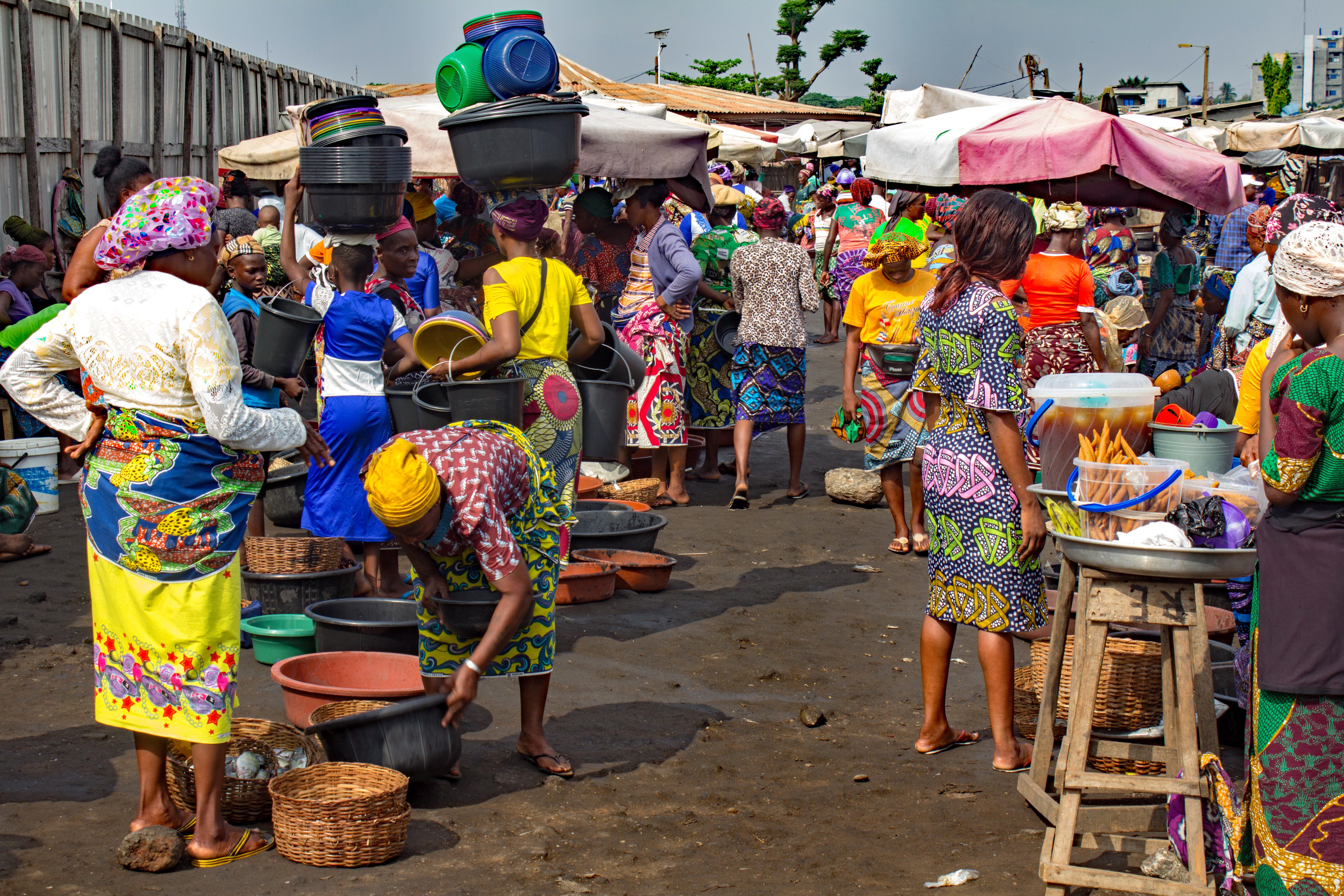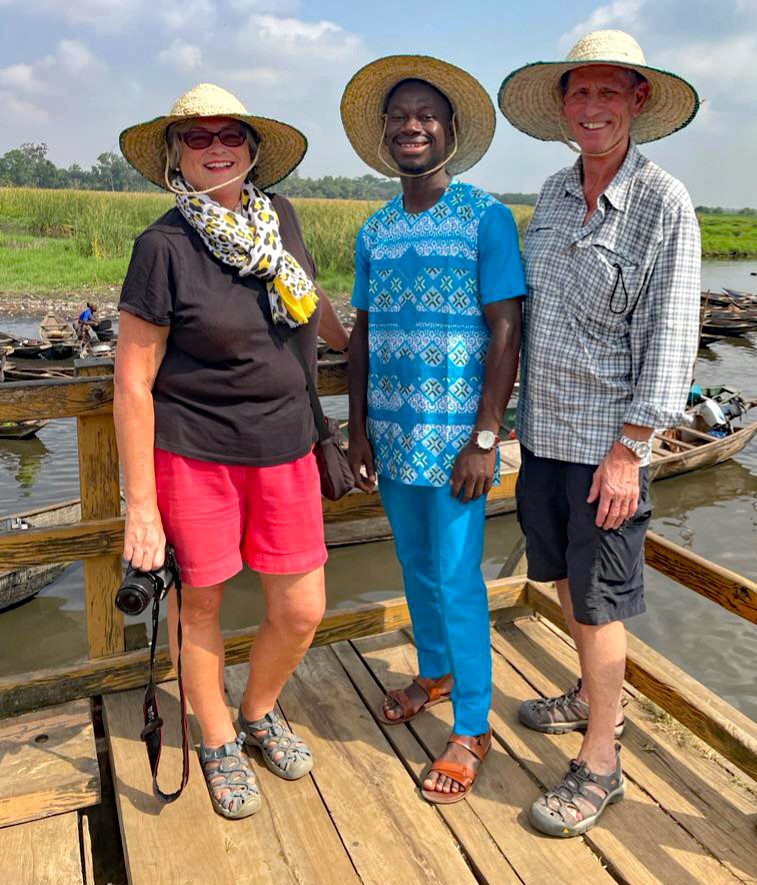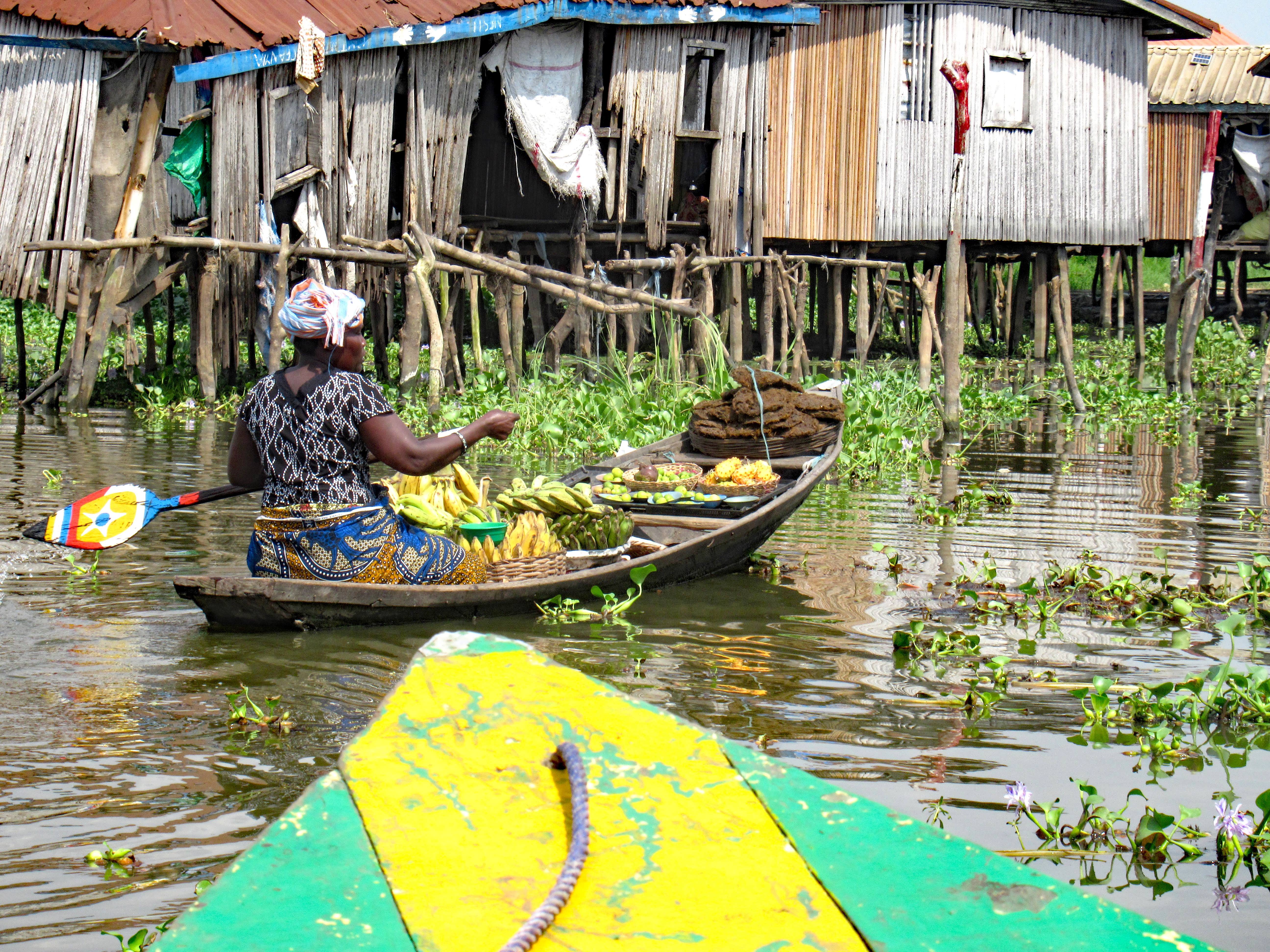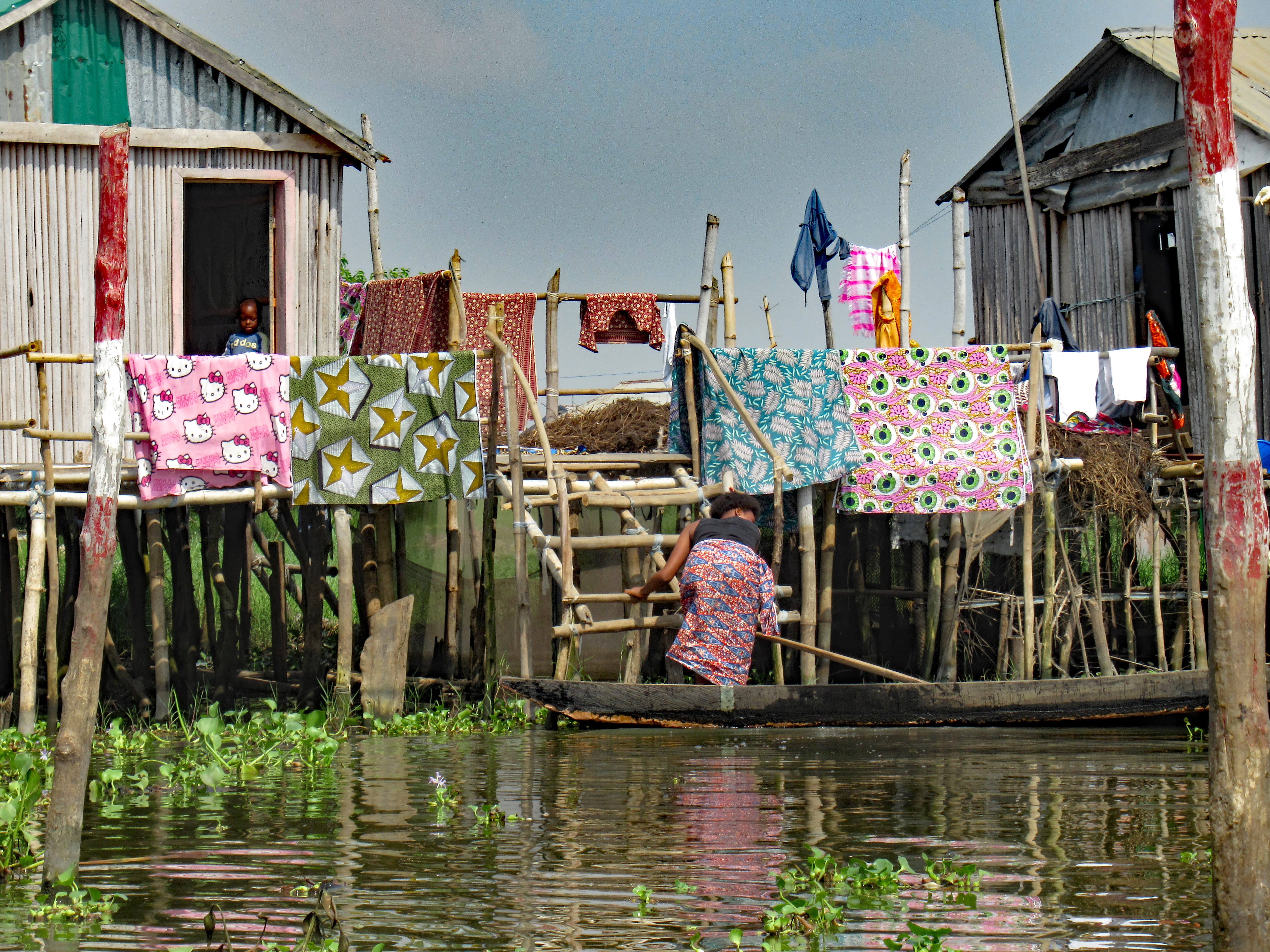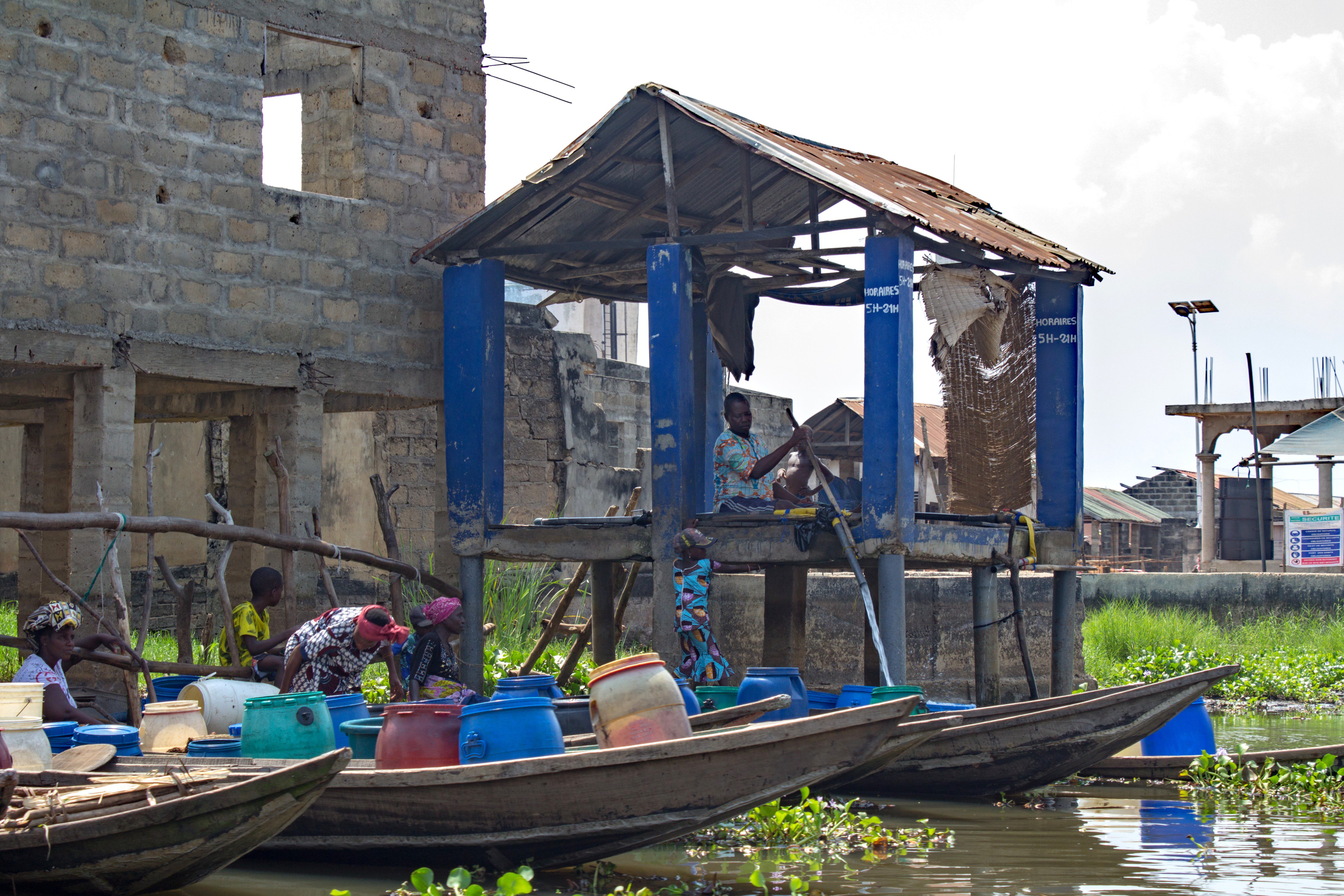Whilst staying in the Benin city of Cotonou, we took an excursion to what is known as the Venice of West Africa – Ganvie Stilt Village. Located on Lake Nokoue, it was originally created for the Tofinu people to stay safe from slave hunters, but it has become part of their culture and way of life.
The population of around 30,000 live almost exclusively from fishing, and before we boarded our boat, we visited the fish market, where colourfully dressed ladies, with wide-brimmed hats were trading a wide variety of fish, crabs and prawns. However, they didn’t like having their photographs taken and we concentrated on general shots. It was uneven and dirty underfoot and we had to tread carefully, but as it was a working market, we didn’t get hassled.
It was then time to get on the water, and a long wooden jetty had pirogues on either side. Some had just one or two people, whilst others were laden with fish being brought to the market or goods to be transported to Ganvie. Although our boat had a roof, Valentine, our guide, produced three wide-brimmed straw hats which he insisted we wore, as temperatures were over 30 degrees. It was an interesting trip and we passed: lots of other craft including full boats, which we were told acted as buses; ‘fish farms’, literally areas sealed off with netting or bamboo; and a fisherman who demonstrated casting his net for us in return for a small tip.
After 30 minutes we began to see rooftops which appeared so tightly packed together, it was hard to imagine they were single dwellings on wooden stilts. The village has everything a community of this size needs: schools catering for all ages, a mosque and church, shops, and football pitch.
We stopped at the only guest house where Valentine had stayed, and he said he found it strange having to go everywhere by boat. He’d asked about the dating process, and was told there was a special lane of water for young lovers. Whilst our boat was being refulled, we watched in fascination as boats queued to have barrels filled with water from a hose. Unfortunately, it wasn’t done particularly carefully, and they had to bail out their boats which had now sunk much lower due to the heavy cargo and were obviously harder to row.
Even small children were rowing quite big boats, and they presumably learn from a young age as every house will have at least four boats: for the father, the mother and two for the children. Once again people didn’t like having their photos taken and if you got too close, they simply adjusted their broad brimmed hat to hide their face. Nearly every home was on stilts, although some small islands had been created because children were not learning to walk as there was insufficient space for them to do it properly.
Our two-hour round trip was fascinating and, despite what our guide book implied, we only saw one other set of tourists at the guest house and two others about to set off.
